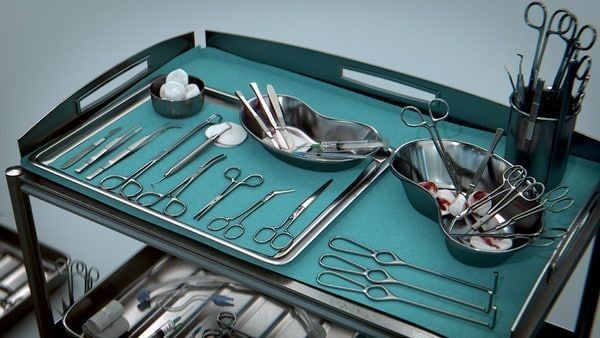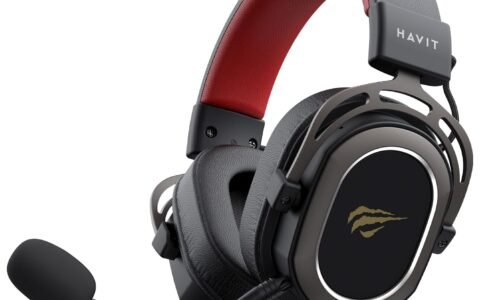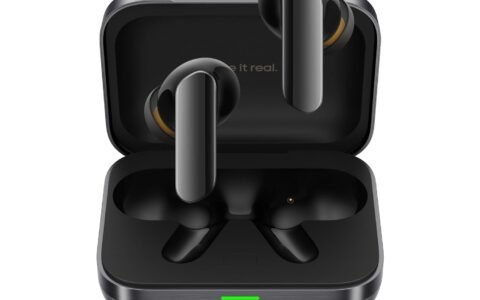
The history of medical instruments is a fascinating journey that mirrors the evolution of human civilization itself. From rudimentary tools used by ancient healers to the sophisticated technology employed in modern medicine, the development of medical instruments has been driven by the relentless pursuit of better health and longer life. This article explores the evolution of medical instruments, highlighting key innovations that have transformed healthcare from its earliest days to the cutting-edge technology we see today.
Ancient Medical Instruments: The Birth of Healing Tools
Early Medical Practices
In ancient times, the practice of medicine was intertwined with religion and mysticism. Early medical practitioners, often shamans or priests, used natural resources such as herbs, bones, and stones to treat ailments. These early healers relied on a combination of ritualistic practices and rudimentary medical instruments to perform treatments.
Trepanation: The Earliest Surgical Procedure
One of the oldest known surgical procedures is trepanation, the act of drilling or scraping a hole into the human skull. Evidence of trepanation dates back to around 7,000 years ago, with skulls found in various parts of the world showing signs of this practice. The reasons for trepanation varied, ranging from treating head injuries and mental disorders to spiritual practices aimed at releasing evil spirits.
The tools used for trepanation were basic, often made from flint or obsidian. Despite their simplicity, these instruments were remarkably effective, and many patients survived the procedure, as indicated by the healing around the trepanation sites.
Egyptian and Greek Contributions
The ancient Egyptians were pioneers in the field of medicine, with their medical practices documented in texts like the Ebers Papyrus. They used a variety of medical instruments, including scalpels, forceps, and surgical needles, many of which were made from bronze. Egyptian physicians also practiced mummification, which required a deep understanding of human anatomy.
The ancient Greeks further advanced medical knowledge, with Hippocrates, often referred to as the “Father of Medicine,” advocating for systematic observation and diagnosis. Greek medical instruments were similar to those used by the Egyptians but showed advancements in design and precision. For example, the Greeks developed more refined scalpels and specialized instruments for setting bones and extracting teeth.
The Middle Ages: A Period of Innovation and Stagnation
Islamic Medicine: A Beacon of Knowledge
During the Middle Ages, the Islamic world became a center of medical knowledge and innovation. Islamic scholars preserved and expanded upon the medical knowledge of the Greeks and Romans, translating important texts and adding their own observations.
One of the most significant figures of this period was Al-Zahrawi, a 10th-century physician from Cordoba, Spain, often considered the “Father of Modern Surgery.” His seminal work, “Al-Tasrif,” was a comprehensive medical encyclopedia that included detailed descriptions and illustrations of surgical instruments. Al-Zahrawi’s contributions laid the foundation for many modern surgical practices, and his instruments, such as the syringe, scalpel, and surgical hook, are still recognizable in contemporary forms.
European Medicine: Limited Progress
In contrast to the Islamic world, medieval Europe saw limited progress in medical instrument development. The dominance of the Catholic Church and the widespread belief in supernatural causes of disease led to a stagnation in medical innovation. However, some advancements were made in the development of medical instruments, particularly in the field of surgery. Barber-surgeons, who performed minor surgical procedures, used a variety of tools such as saws, knives, and forceps. These instruments, though crude, were the precursors to more sophisticated surgical tools.
The Renaissance: A Revival of Medical Science
Anatomical Discoveries
The Renaissance marked a significant turning point in the history of medical instruments. The period’s emphasis on scientific inquiry and exploration led to a revival of interest in human anatomy and surgery. Andreas Vesalius, a 16th-century Belgian anatomist, played a crucial role in this revival. His groundbreaking work, “De Humani Corporis Fabrica,” provided detailed anatomical drawings that revolutionized the understanding of the human body.
This renewed interest in anatomy spurred the development of more precise medical instruments. Surgeons and physicians sought tools that could match the detailed knowledge they were gaining about the human body. This era saw the refinement of existing instruments and the invention of new ones designed to perform more complex procedures with greater accuracy.
The Birth of Modern Surgery
Ambroise Paré, a French surgeon, is another key figure from this period. Often referred to as the “Father of Modern Surgery,” Paré introduced several innovative surgical techniques and instruments. He advocated for the use of ligatures to stop bleeding during amputations, a significant improvement over the previous practice of cauterization with hot irons. Paré also developed a range of surgical instruments, including more refined forceps, scalpels, and amputation saws.
The 18th and 19th Centuries: The Age of Innovation
The Invention of the Stethoscope
One of the most iconic medical instruments, the stethoscope, was invented by French physician René Laennec in 1816. Before the stethoscope, doctors would place their ear directly on the patient’s chest to listen to heart and lung sounds, a practice known as immediate auscultation. Laennec’s invention allowed for indirect auscultation, providing clearer sound and greater diagnostic accuracy.
The stethoscope quickly became an indispensable tool in medical practice, and its design has been refined over the years to improve acoustics and comfort. The invention of the stethoscope represents a significant milestone in the development of non-invasive diagnostic tools.
The Advent of Anesthesia
The 19th century also saw the introduction of anesthesia, which revolutionized surgery by allowing for painless operations. The first successful use of ether as an anesthetic occurred in 1846, marking the beginning of modern anesthesia. The introduction of anesthetic instruments, such as inhalers and masks, enabled more complex and invasive surgeries to be performed with reduced risk and discomfort for patients.
The Rise of Antiseptic Surgery
Another critical development in the 19th century was the introduction of antiseptic techniques by British surgeon Joseph Lister. Lister’s use of carbolic acid to sterilize surgical instruments and wounds dramatically reduced the incidence of postoperative infections. This innovation led to the widespread adoption of antiseptic and later aseptic techniques, which have become standard practice in modern surgery.
The need for sterilization prompted the development of new types of medical instruments, such as steam sterilizers (autoclaves) and specialized surgical tools made from materials that could withstand high temperatures and repeated sterilization.
The 20th Century: The Era of Technological Advancement
The Introduction of Medical Imaging
The 20th century brought about some of the most significant advancements in medical instruments, particularly in the field of medical imaging. The discovery of X-rays by Wilhelm Conrad Roentgen in 1895 paved the way for the development of radiography, allowing doctors to see inside the human body without making an incision. X-ray machines became a standard tool in hospitals, revolutionizing the diagnosis and treatment of a wide range of conditions.
The development of other imaging technologies, such as ultrasound, computed tomography (CT), and magnetic resonance imaging (MRI), further enhanced the ability of physicians to diagnose and treat diseases. These imaging instruments have become essential tools in modern medicine, providing detailed views of the body’s internal structures and helping to guide surgical procedures.
The Rise of Minimally Invasive Surgery
The late 20th century saw the advent of minimally invasive surgery, a field that has transformed surgical practice. Laparoscopy, a technique that uses small incisions and specialized instruments to perform surgery, became increasingly popular due to its benefits, including reduced recovery times and fewer complications.
Laparoscopic instruments, such as trocars, endoscopes, and specialized surgical tools, were developed to facilitate these procedures. The success of minimally invasive surgery has led to the development of robotic-assisted surgery, where surgeons use robotic instruments to perform precise and complex operations with greater control and accuracy.
Advances in Diagnostic Instruments
The 20th century also saw significant advancements in diagnostic instruments. The invention of the electrocardiogram (ECG) by Willem Einthoven in 1903 allowed doctors to monitor the electrical activity of the heart, revolutionizing the diagnosis of heart conditions. The development of the sphygmomanometer, which measures blood pressure, provided another critical tool for assessing cardiovascular health.
Other diagnostic instruments, such as blood glucose meters, pulse oximeters, and thermometers, have become essential in monitoring and managing various health conditions. These tools have improved the ability of healthcare providers to diagnose diseases quickly and accurately, leading to better patient outcomes.
The 21st Century: The Future of Medical Instruments
The Integration of Digital Technology
The 21st century has seen the integration of digital technology into medical instruments, leading to the development of smart devices that can monitor, diagnose, and even treat patients in real time. Wearable devices, such as smartwatches, can track vital signs like heart rate, blood pressure, and oxygen levels, providing continuous monitoring and alerting users to potential health issues.
The rise of telemedicine has also led to the development of portable diagnostic instruments that can be used at home, allowing patients to receive medical care remotely. Devices like digital stethoscopes, portable ultrasound machines, and smartphone-based ECG monitors enable doctors to perform virtual consultations and provide care to patients in remote or underserved areas.
The Role of Artificial Intelligence and Robotics
Artificial intelligence (AI) and robotics are playing an increasingly important role in the development of medical instruments. AI algorithms are being used to analyze medical images, predict patient outcomes, and assist in the diagnosis of diseases. Robotic instruments, such as those used in robotic-assisted surgery, allow for greater precision and control during procedures, reducing the risk of complications.
The future of medical instruments will likely see even greater integration of AI and robotics, leading to the development of more advanced and personalized medical tools. These innovations have the potential to revolutionize healthcare, improving the accuracy of diagnoses, the effectiveness of treatments, and the overall quality of patient care.
The Importance of Sustainability in Medical Instruments
As the healthcare industry becomes increasingly aware of its environmental impact, there is a growing focus on sustainability in the design and production of medical instruments. The use of eco-friendly materials, energy-efficient manufacturing processes, and recyclable or reusable instruments is becoming more common. The future of medical instruments will likely involve a greater emphasis on reducing waste and minimizing the environmental footprint of healthcare.
Conclusion: A Journey of Innovation and Discovery
The evolution of medical instruments is a testament to humanity’s ingenuity and determination to improve health and well-being. From the rudimentary tools of ancient healers to the sophisticated technology of modern medicine, each advancement has brought us closer to understanding and treating the complexities of the human body.
As we look to the future, the continued development of medical instruments will be driven by advances in technology, a commitment to patient care, and a growing awareness of sustainability. The instruments of tomorrow will not only be more effective and precise but also more accessible and environmentally friendly, ensuring that healthcare continues to evolve in ways that benefit both patients and the planet.



